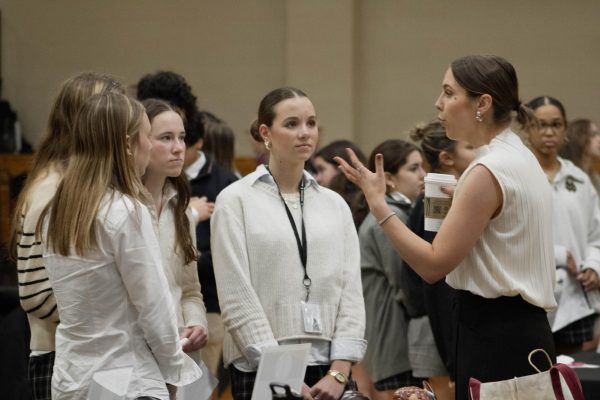Going to the Back to the Basics: Why one senior decided that social media had to go
Most of us probably don’t think much about our social media usage. Social media is simply a part of our lives: a way to connect with our friends and pass the time when we’re bored. But just because it’s part of our lives doesn’t mean it’s good for us. Although there is no scientific consensus as to whether or not social media addiction is truly an addiction, both personal experience and scientific studies show that social media can have all sorts of negative effects, ranging from a shortened attention span to a lower self esteem and serious mental illnesses including anxiety and depression. Additionally, social media can take the place of quality interpersonal interaction when we mistake viewing someone’s story, liking his or her photos, or maintaining a Snapchat streak for having a healthy relationship.
For these reasons and more, an increasing number of young people are choosing to disconnect from social media. Roisin Smith, a senior at Fenwick High School, is one of such person. Before quitting social media, she estimates that she spent 2-3 hours a day on Snapchat and Instagram. “I realized that when I was preoccupied with something, I would just go to my phone as default,” she explained. She shares this habit with the most high schoolers across the country. In fact, according to King University, 50% of teens admitted to cell phone addiction. Social media is designed that way: whenever we feel the slightest bit apathetic, it provides something to do that alleviates boredom without providing any real substance.
Additionally, although boredom is certainly an unpleasant sensation, it is crucial to the creative process. Sandi Mann, a psychologist at the University of central Lancashire notes that “we try to extinguish every moment of boredom in our lives with mobile devices. [it’s] like eating junk food.” Mann proved the notion by conducting a study of subjects and their creativity levels after various tasks. The two test groups— one which was made to monotonously copy phone books, and the other which was allowed a less boring task—were subsequently asked to devise a new use for cups. Surprisingly, those subjects who copied phone books ended up turning out a higher number of creative ideas. Eliminating boredom from our lives, however nice it may sound, is unhealthy.
When we turn to social media as soon as we feel unentertained, not only do we teach our brains that boredom is something to be avoided at all costs, but instead of spending time daydreaming, thinking, and creating, we spend hours with “useless scrolling” through “unimportant information and photos” as Roisin describes it. Her realization of the detriments of social media proved reason enough to give it up.
Instagram, in particular, is well known for contributing to unrealistic beauty standards and obsession with appearance. Snapchat—with its filters that many say promote unrealistic and Eurocentric beauty standards by smoothing and lightening skin in order to hide blemishes—is certainly not exempt from this criticism.
The rise in the number of Instagram models or “influencers” who use their looks and a large amount of editing in order to gain celebrity status is proof of that. However, it’s hard to understand just how retouched some of these images are and how different Instagram is from real life; in time, it becomes difficult not to compare images from social media to the bodies we see in the mirror. Even the common Instagram user will only post photos they look their absolute best in. As Roisin says, when you open Instagram, “all you see is people trying to show off what they look like or people setting impossible standards for beauty.”
As for the reason she gave up Snapchat, Roisin complained of superficiality: “I had all these streaks with people I didn’t even interact with in person.” This situation is familiar to all too many of us. It’s become commonplace to have a streak with someone whom you may not have spoken to in nearly a year. Even though most of us know that Snapchat streaks are merely a marketing tool to get teenagers to use Snapchat at least once a day, there can be something so satisfying about seeing the number climb into the double and triple digits. Roisin noticed that she was investing time into relationships that didn’t really exist, and decided that giving up Snapchat altogether was a surefire way to fix that.
At the end of the day, giving up social media proved easier than she expected, Roisin says, and she’s glad she did it. “I had a lot more time for my family, homework, sports, and friends,” she reflected, and rather than falling out of touch, “all the people who really cared made a point to text instead of using [social media as a medium of superficial communication].” Though it seems like a daunting task, giving up social media had its benefits. “It felt really good to be more present,” Roisin adds. Her final statement is not to be forgotten: “I don’t miss social media at all.”






